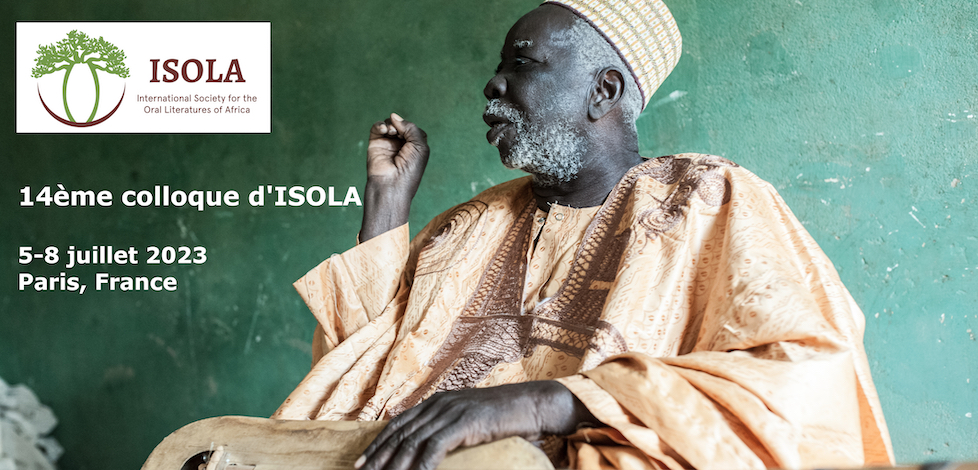What do narratives have to tell us about the relationships between humans and other primates? The paper poses the hypothesis that narratives that portray animality do not only express the identity of certain animals different from us, but also express multiple possibilities of interaction between species inspired by cultural, political and scientific epistemologies. The objective's work is to understand the symbolic place attributed to humans and gorillas in filmic landscapes, considering western and oral African narratives in order to identify narrative aspects of sharing the world.
The strategic reason for focusing on animals as charismatic as the gorillas in filmic narratives is based on their educational power and, contradictorily, in their influence in the configuration of cultural territories that organize modern-colonial thought. To this end, I will observe the extension, contours and symbolic limits of narratives that try to blur the boundaries between animality and humanity.
This paper is a reflection on the invisibility and importance of the knowledge of local populations in scientific, literary or artistic production in the West about gorillas in sub-Saharan Africa. The West only became aware of the existence of gorillas in the 19th century. Historical documents signal that it first happened in Gabon in 1847 by Thomas Savage (Correa, 2015). The approximation and all forms of contact from the West, through hunters, explorers and travelers, with gorillas only occurred through the knowledge of local populations. The western knowledge about gorillas impacted science (anatomy, the theory of evolution and the discovery of our kinship with primates), but also in addition to the hunting of gorillas that arrived alive or in pieces to take part in zoos and scientific and private collections. It also affected the design of the colonial division of Africa and literature, both children's and youth as well as travel and adventure stories. However, this whole process also made invisible, distorted or devalued the local knowledge of African populations. In this work, I seek to analyze 4 emblematic films: King of the Jungle (1933), King Kong (1933), Gorillas in the Mist (1988) and Virunga (2014). These films were analyzed based on what they manifest about the circulating ideas about gorillas, the local population and natural world at the time and historical context in which they were produced in order to observe: 1) the historical transformations of the representations about the gorillas and 2) the influence of African oral narratives and local knowledge in the process.
Doctor degree in Social Sciences (Unicamp - Brasil) obtained by a research about theoretical debates on the relations among race, afro Brazilian popular culture and folklore em Minas Gerais. Since 2000, Rapchan has developed research about nature/culture conceptions, Western thought and relations between humans and other living beings, particularly primates. She is currently postdoctoral researcher in the Centro de Estudos Sociais (CES) at Universidade de Coimbra (Portugal) and collaborating professor in the Post-Graduate Program in Social Sciences (PGC-UEM, Brasil).
Transformations des récits cinématographiques occidentaux et des relations entre humains et gorilles : Visibilité et invisibilité des traditions orales africaines
Qu'est-ce que les récits ont à nous dire sur les relations entre les humains et les autres primates ? L'article pose l'hypothèse que les récits qui dépeignent l'animalité n'expriment pas seulement l'identité de certains animaux différents de nous, mais expriment également de multiples possibilités d'interaction entre les espèces inspirées par les épistémologies culturelles, politiques et scientifiques. Le travail de l'objectif est de comprendre la place symbolique attribuée aux humains et aux gorilles dans les paysages filmiques, en considérant les récits africains occidentaux et oraux afin d'identifier les aspects narratifs du partage du monde.
La raison stratégique de s'intéresser à des animaux aussi charismatiques que les gorilles dans les récits filmiques tient à leur pouvoir pédagogique et, contradictoirement, à leur influence dans la configuration des territoires culturels qui organisent la pensée coloniale moderne. Pour cela, j'observerai l'extension, les contours et les limites symboliques des récits qui tentent de brouiller les frontières entre animalité et humanité.
Cet article est une réflexion sur l'invisibilité et l'importance des savoirs des populations locales dans la production scientifique, littéraire ou artistique en Occident sur les gorilles d'Afrique subsaharienne. L'Occident n'a pris conscience de l'existence des gorilles qu'au 19ème siècle. Des documents historiques signalent qu'il s'est produit pour la première fois au Gabon en 1847 par Thomas Savage (Correa, 2015). Le rapprochement et toutes les formes de contact de l'Occident, par l'intermédiaire des chasseurs, des explorateurs et des voyageurs, avec les gorilles n'ont eu lieu que grâce à la connaissance des populations locales. Les connaissances occidentales sur les gorilles ont impacté la science (l'anatomie, la théorie de l'évolution et la découverte de notre parenté avec les primates), mais aussi la chasse aux gorilles arrivés vivants ou en morceaux pour participer aux zoos et aux collections scientifiques et privées. Cela a également affecté la conception de la division coloniale de l'Afrique et de la littérature, tant pour les enfants et les jeunes que pour les récits de voyages et d'aventures. Cependant, tout ce processus a également rendu invisible, déformé ou dévalorisé les savoirs locaux des populations africaines. Dans cet ouvrage, je cherche à analyser 4 films emblématiques: King of the Jungle (1933), King Kong (1933), Gorillas in the Mist (1988) et Virunga (2014). Ces films ont été analysés à partir de ce qu'ils manifestent des idées circulant sur les gorilles, la population locale et le monde naturel à l'époque et dans le contexte historique dans lesquels ils ont été réalisés afin d'observer : 1) les transformations historiques des représentations sur les gorilles et l'influence des récits oraux et des savoirs locaux dans le processus.

 PDF version
PDF version
